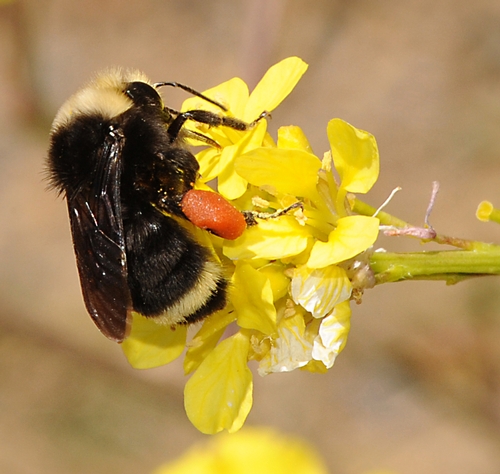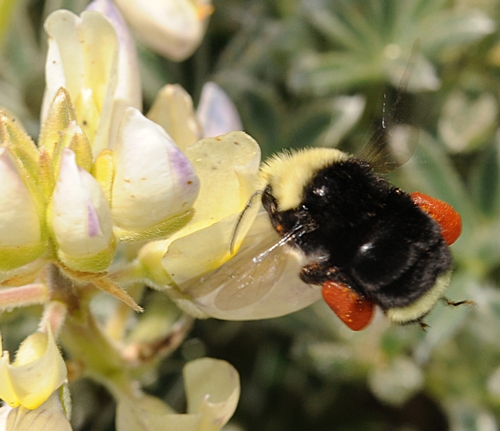The yellow-faced bumble bee (Bombus vosnesenskii) may be one of the most underappreciated pollinators.
You see it buzzing around lavender, lupine, California poppies, mustard and other plants.
But a Xerces Society study of organic farms in Yolo County found that it was one of the most important of the native bees visiting the Sungold cherry tomatoes.
The study, titled “Native Bee Pollination of Cherry Tomatoes,” was based on research by Claire Kremen of UC Berkeley, Neal Williams and Robbin Thorp of UC Davis and Sarah Greenleaf, California State University, Sacramento, all members of Xerces.
“Recent studies demonstrate that tomatoes pollinated by native bees produce larger and more numerous fruits,” the authors wrote. “Honey bees do not pollinate tomatoes because they cannot get the pollen and the flowers do not produce nectar. With no reward, honey bees will not visit the flower. Many native bees, however, know the trick to extracting tomato pollen and are, therefore, valuable pollinators.
"Although the tomato plant is self-fertile, flowers must be vibrated by wind or bees in order to release pollen for fertilization. To achieve the most effective pollination, the flower must be vibrated at a specific frequency to release the pollen. Honey bees are unable to vibrate the tomato flower in this way, but bumble bees and other native species can.
The Xerces Society offers a great resource on how to attract bumble bees: see Farming for Bees: Guidelines for Providing Native Bee Habitat on Farms.
In some respects, the yellow-faced bumble bee resembles a cuddly teddy bear. It's big and bumbly, as a bumble bee should be.
From behind, however, its heavy load of pollen looks for all the world like saddlebags on a trail horse.
Attached Images:

Foraging Bumble Bee

Saddlebags